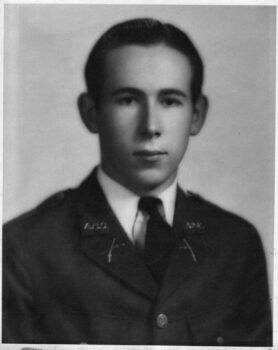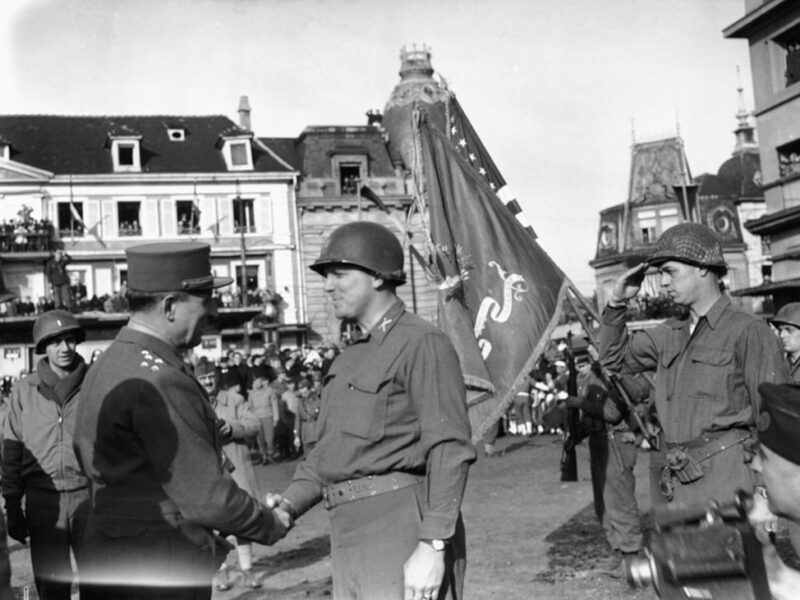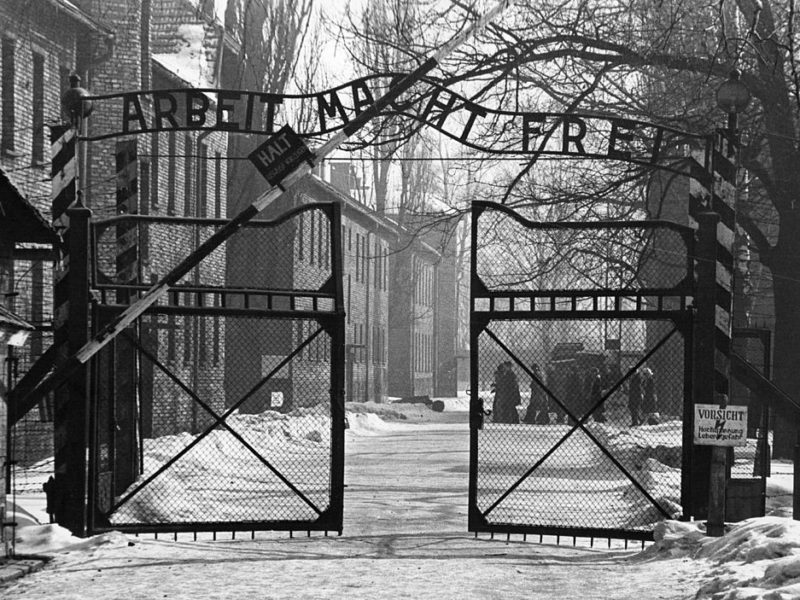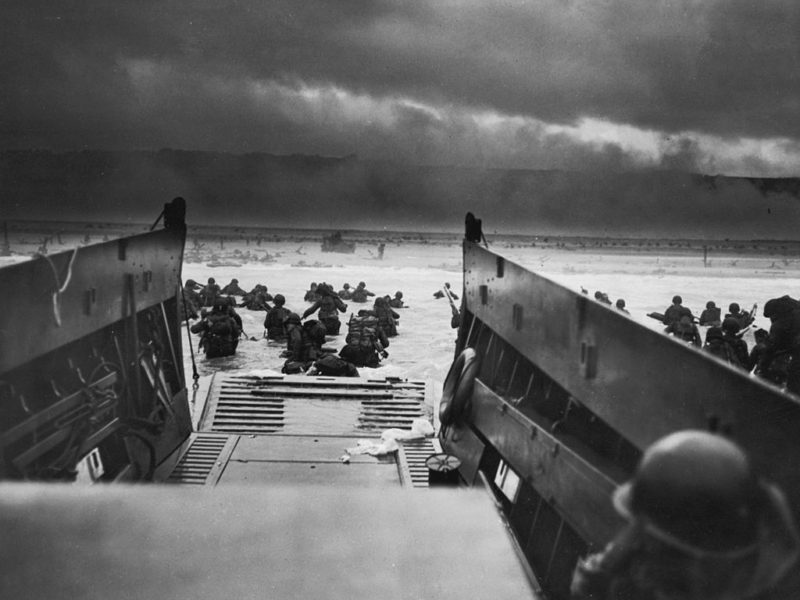99-Year-Old Aggie Veteran Remembers Service In World War II

James R. McIlroy was walking with friends on a Sunday morning, on their way to catch a movie at the on-campus theater, when another student with a radio told the group the news: Japan had bombed the U.S. naval base at Pearl Harbor in Honolulu, Hawaii.
It was Dec. 7, 1941, and McIlroy was just three months into his freshman year at the Agricultural and Mechanical College of Texas. Draft laws at the time required all men to register for military service at age 21, but the age was quickly lowered to 18. Seventeen-year-old McIlroy, knowing he didn’t want to be in the infantry, joined the enlisted reserves in a program that would allow him to wrap up his studies before getting a commission.
Things didn’t go as planned.
The enlisted reserves were activated soon after he joined, and in 1943 McIlroy was sent to the Army Specialized Training Program before attending basic training at Camp Maxey outside Paris, Texas. He was shipped overseas as part of the 99th Infantry Division, beginning a tour that would take him from foxholes in Belgium, where he huddled with his squad for days at a time to stay warm during freezing temperatures, to the front lines of the Battle of the Bulge.
“Three months later, after combat training, I was in front leading,” remembers McIlroy, now 99. “I was a scout right in front, and I walked into the Germans. We had hand-to-hand combat, which most people did not have.”
McIlroy, a sergeant, was injured in the battle. He was discharged in September 1945 after several months in Army hospitals, earning a Purple Heart and Bronze Star. The 1945 graduate was recognized for his service during the Nov. 11 Texas A&M football game against Mississippi State, and earlier in the day attended a Veterans Day wreath-laying ceremony held by the Corps of Cadets.
Famously, more than 20,000 Aggies fought in World War II; the all-male military college produced more service members than any other university. In McIlroy’s division alone, he estimates there were around 100 Texas A&M students. Of those, only about 35 survived, he said.
“Nobody saw more combat than we did and lived,” McIlroy said.

‘All You Could Do Is Pray For The Best’
Despite his hesitation about the possibility of being drafted into the infantry, McIlroy often found himself on the front lines. He jokes that he was unsure why this happened — “probably because I was an Aggie.”
He also spent weeks at a time tucked into foxholes during a brutal winter.
“We lived in a hole in the ground, and the smaller it was, the better we liked it, because there was less of a chance of getting a direct hit,” McIlroy said. “It was freezing weather. All you could do is pray for the best.”
The shelling was so bad early in the war, he describes the snow as resembling a checkerboard, with fields of white marred by black patches that had been hit.
McIlroy’s time in combat ended on the last day of the Battle of the Bulge. While leading an attack in knee-deep snow, his leg was grazed by a bullet. After lying in the snow from the afternoon until dark, he remembers being pulled by a sled to the hospital. McIlroy was told later that without penicillin, he likely would have died. Along with his injuries, he suffered from gangrene.
When he woke up in the hospital having been freshly bathed, McIlroy thought he was in heaven.
Later, he informed a nurse delivering clean clothes that he needed to get back to his regiment.
“She said, ‘What are you talking about? For you, the war is over,’” McIlroy said. “I guess I was relieved.”
Return To Texas A&M
McIlroy was put on a ship back to states, taking a zig-zagging path that lasted about three weeks.
After returning to campus, he never discussed his experience with other Aggies beyond asking if they knew who had made it back.
Those early days at A&M mostly consisted of having a good time, he said, drinking beer and learning to play poker. A fast runner and in “excellent shape,” his classmates would pay McIlroy to run for them in physical education class. For $5, he’d run the mile fast for an A. For a B or C grade, he charged a couple of dollars and ran at a medium pace. “I dared not finish first too many times,” he said.
McIlroy buckled down after the dean called him into his office for a chat about his grades.
“When I got out of the Army, I’d grown up from a boy to a man,” he said.
Today, several of McIlroy’s descendants have followed in his footsteps at Texas A&M, including children John McIlroy ’83 and Charles McIlroy ’86; grandchildren Adam Birge ’04, Jessica James ’09 and Abby Landry ’19; and one great-grandchild, current student Nathan Birge ’26.
Media contact: tamunews@tamu.edu





